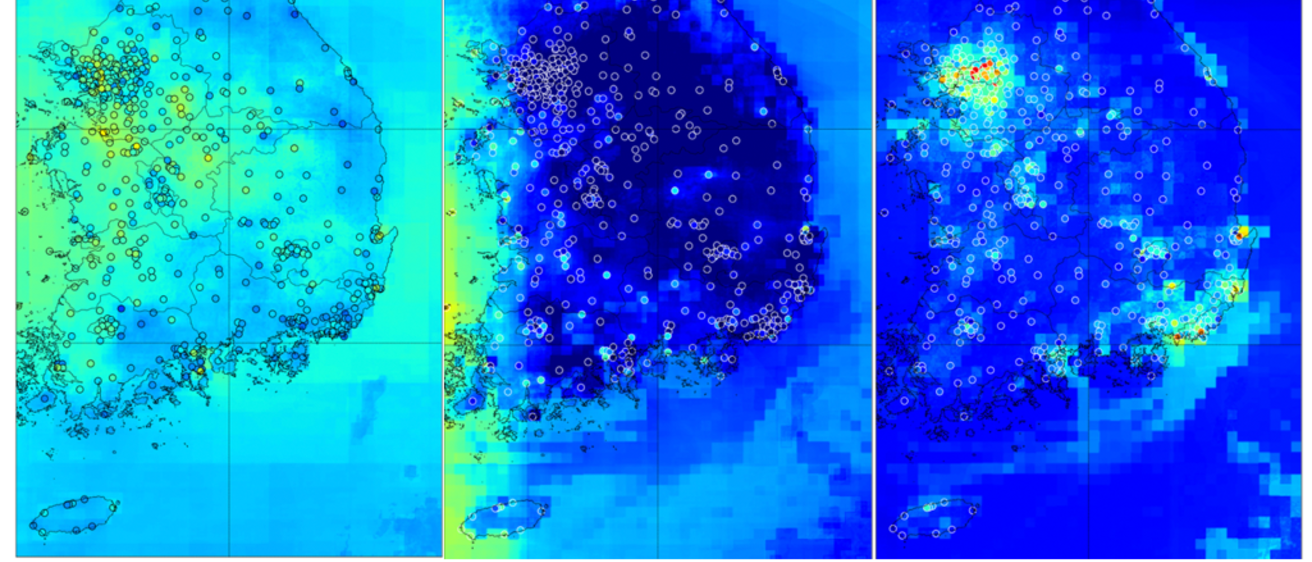Ozone, nitrogen dioxide, and PM2.5 estimation from observation-model machine learning fusion over S. Korea: Influence of observation density, chemical transport model resolution, and geostationary remotely sensed AOD
Authors: Beiming Tang, Charles O. Stanier, Gregory R. Carmichael, Meng Gao
Abstract: High-resolution multi-component estimates of ground-level air pollutants are necessary for assessing their impacts to human health, agriculture, and ecosystems. We demonstrate a high-resolution fusion and downscaling approach over South Korea for May 2016 and May 2021. Daily 1 km fine particulate matter (PM2.5), ozone (O3), and nitrogen dioxide (NO2) concentrations are calculated at ground level using a random forest machine learning (ML) algorithm, with predictors including reanalysis meteorology, satellite aerosol optical depth (AOD), and gridded surface fields from chemical transport models (CTM). The ML model is tested for May 2016, coinciding with the Korea-United States Air Quality Study (KORUS-AQ) intensive field campaign, and for May 2021, to allow incorporation of observations from the Geostationary Environment Monitoring Spectrometer (GEMS). In the tests for May 2016, the correlation coefficients (R) and root mean squared errors (RMSE) relative to withheld observations of daily-averaged pollutants in 10-fold cross-validation are promising: 0.93 (5.5 g/m3), 0.90 (5.5 ppbv), and 0.95 (4.7 ppbv) for PM2.5, O3, and NO2, respectively. Relative performance is assessed for alternate choices of predictors: (a) 80-km global reanalysis Copernicus Atmosphere Monitoring Service (CAMS) vs. 4-km regional Weather Research and Forecasting model coupled with Chemistry (WRF-Chem); (b) AOD polar-orbiting Moderate Resolution Image Spectroradiometer (MODIS) Multi-Angle Implementation of Atmospheric Correction (MAIAC) vs. geostationary GEMS; and (c) variations in surface observation density. This study is among the very first to incorporate both CTM and GEMS AOD for building surface high resolution multiple air pollution predictions over South Korea.
